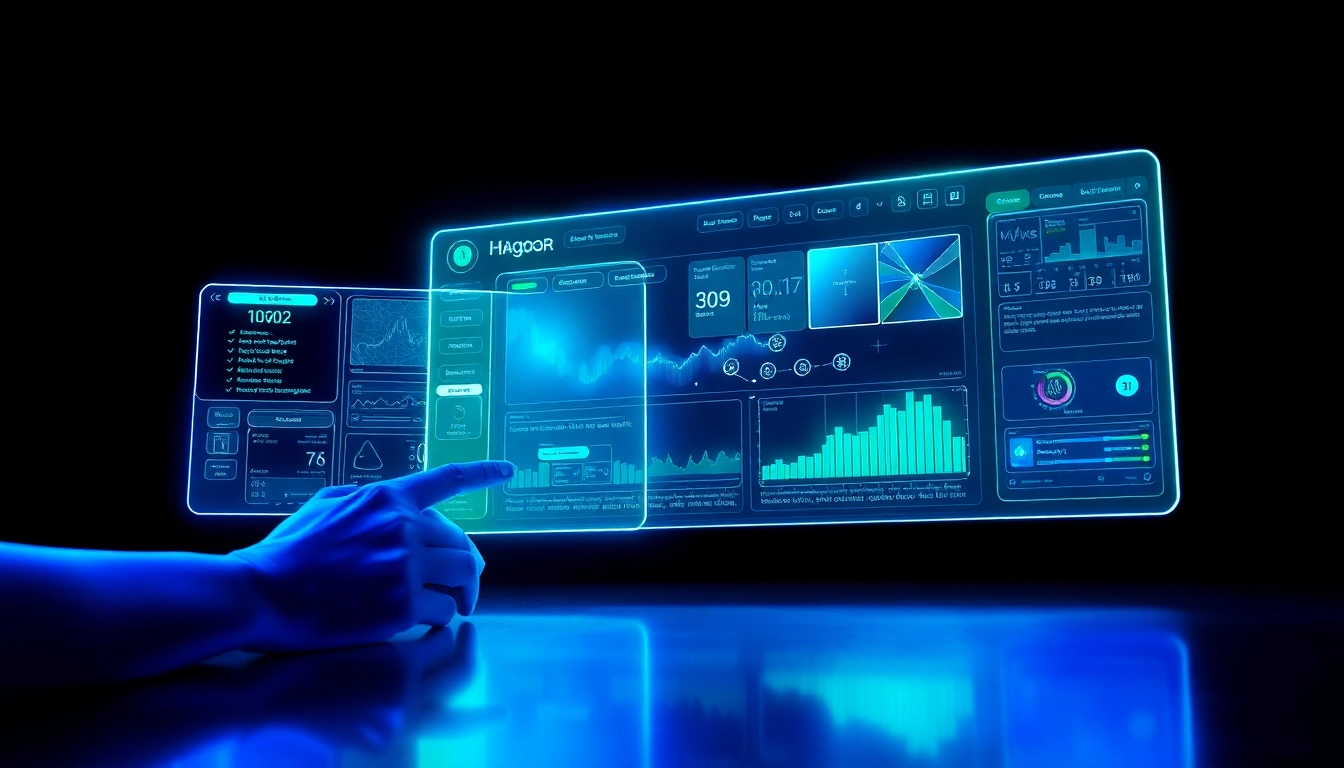Introduction to Nano Banana AI: The Next Generation of Image Editing
In the rapidly evolving landscape of artificial intelligence and digital creativity, a new player has emerged that promises to revolutionize how we approach image editing. Dubbed nano banana ai, this cutting-edge platform is being touted as Google’s most advanced AI image editor to date. Unlike conventional tools that rely primarily on basic manipulation or simplistic algorithms, Nano Banana AI claims to harness advanced reasoning capabilities that enable it to comprehend, analyze, and execute complex edits with unprecedented accuracy and consistency.
This innovative platform positions itself not merely as an image editing tool but as a paradigm shift—an AI that *thinks* about images in a human-like manner. It promises to outperform competitors by a significant margin, boasting a 95-99% accuracy rate in executing user commands, compared to the 20-70% accuracy typical of other solutions like Flux Kontext and Gemini 2.0 Flash. Whether you’re a casual creator, a professional designer, or a large enterprise, Nano Banana AI aims to serve all levels of users through its tiered pricing structure, ranging from $29 to $79 per month, with enterprise options tailored for large-scale needs.
How Nano Banana AI Outperforms Competitors: Key Features and Capabilities
Advanced Reasoning and Contextual Awareness
At the heart of Nano Banana AI’s superiority is its ability to understand the *context* of an image. Traditional editing tools might allow you to swap backgrounds or adjust colors, but they often struggle to preserve the integrity of complex scenes or maintain character consistency across multiple edits. Nano Banana AI leverages deep reasoning algorithms that analyze the entire image, interpret user intent, and execute changes that align perfectly with the original scene’s logic and narrative.
For example, if a user requests to change the sky in a landscape photo while ensuring that reflections, shadows, and atmospheric effects remain consistent, Nano Banana AI intelligently interprets these nuances. Its capacity to understand *why* a modification is needed—rather than just *how* to make it—sets it apart from more superficial editing solutions.
Perfect Consistency and Memory
One of the most challenging aspects of AI-driven image editing is maintaining consistency, especially when performing multiple edits or complex transformations. Nano Banana AI introduces a unique memory component that allows it to remember details from earlier steps, ensuring that subsequent edits do not produce conflicting results. This feature is vital for professional workflows where multiple revisions and iterative improvements are common.
For instance, if a user modifies a character’s clothing in one part of the image, Nano Banana AI ensures that the same clothing appears consistently throughout the scene, even after several other changes. This level of coherence is rarely achieved by existing tools, which often require manual adjustments to fix inconsistencies.
3D Spatial Awareness and Logical Reasoning
Unlike traditional 2D editing algorithms, Nano Banana AI incorporates a form of 3D spatial understanding. This capability enables it to interpret depth, perspective, and spatial relationships within an image, facilitating more realistic and natural modifications. Whether it’s repositioning objects, adjusting lighting to match scene geometry, or creating seamless composite images, Nano Banana AI’s spatial reasoning makes these complex tasks achievable with minimal user input.
Moreover, its logical reasoning abilities allow it to predict the outcomes of edits, avoid common pitfalls such as distortions or unnatural artifacts, and suggest optimal editing pathways. This comprehensive understanding results in images that are not only visually appealing but also logically coherent.
Deep Contextual Understanding: Why It Matters for Creators and Businesses
Enhancing Creative Freedom
For individual creators and artists, Nano Banana AI offers a tool that truly understands their vision. Instead of battling with technical limitations or tedious manual adjustments, users can focus on their creative ideas, knowing that the AI will interpret their instructions accurately. Whether it’s transforming a portrait, creating complex composites, or experimenting with artistic effects, Nano Banana AI acts as an intelligent collaborator, translating vague concepts into precise visual results.
Streamlining Professional Workflows
Businesses and commercial clients benefit immensely from Nano Banana AI’s capabilities. In fields like advertising, fashion, entertainment, and real estate, quick turnaround times and high-quality output are essential. Nano Banana AI’s deep understanding reduces the need for multiple revisions, minimizes human error, and accelerates production cycles.
For example, a real estate firm could swiftly alter images of properties—changing furniture, adjusting lighting, or updating facades—while preserving realistic proportions and spatial relationships. The result is a more compelling presentation that can be delivered faster and with greater confidence in quality.
The Technology Behind Nano Banana AI: Reasoning, Consistency, and Spatial Awareness
Underlying Algorithms and Architecture
At its core, Nano Banana AI is built upon advanced neural network architectures that integrate reasoning modules with traditional image processing techniques. It combines deep learning models trained on vast datasets with logic-based algorithms that simulate human-like understanding of scenes and objects. This hybrid approach enables it to interpret complex instructions, remember previous edits, and maintain scene coherence throughout the editing process.
Training Data and Continuous Learning
The platform is trained on diverse datasets encompassing various styles, scenes, and object interactions, ensuring it can handle a wide array of scenarios. Continuous learning mechanisms allow Nano Banana AI to improve over time, adapting to new editing styles, user preferences, and emerging visual trends.
Spatial and Contextual Reasoning Modules
Specialized modules facilitate 3D spatial awareness, enabling the AI to understand depth, perspective, and object relationships. These modules work in tandem with reasoning algorithms to execute edits that make sense within the scene’s spatial context, resulting in hyper-realistic and logically consistent images.
Use Cases and Applications: From Casual Creators to Enterprise Solutions
For Casual Creators and Hobbyists
Everyday users who enjoy editing photos for social media, personal projects, or hobbies will find Nano Banana AI accessible and powerful. Its intuitive interface and intelligent features allow even novices to produce professional-quality images effortlessly. Tasks like background removal, color correction, and style transfer become simple and enjoyable.
Professional Photographers and Designers
In the professional realm, Nano Banana AI serves as an invaluable assistant for retouching, compositing, and creative experimentation. Its deep contextual understanding reduces the time spent on tedious manual adjustments, allowing artists to focus on innovation and artistic expression. The platform’s precision ensures that edits maintain the integrity of the original scene, preserving details and ensuring high fidelity.
Enterprise and Commercial Applications
Large organizations leverage Nano Banana AI for mass image processing, brand consistency, and rapid content generation. From automotive manufacturers adjusting product images to e-commerce platforms updating thousands of listings, the AI’s ability to execute complex, consistent edits at scale is a game-changer.
Pricing and Accessibility: Is Nano Banana AI Worth the Investment?
Tiered Pricing Structure
Nano Banana AI offers a flexible pricing model to suit various user needs:
- Standard Plan at $29/month: Ideal for casual users and small-scale projects, providing access to core editing features.
- Pro Plan at $59/month: Designed for professionals requiring advanced tools, higher processing limits, and priority support.
- Enterprise Solutions at $79/month and custom packages: Tailored for large businesses with extensive editing needs, API access, and dedicated support.
Cost-Benefit Analysis
While the platform’s investment might seem significant compared to basic editing tools, its superior accuracy and intelligent capabilities justify the cost for serious creators and enterprises. The reduction in manual editing time, the quality of results, and the ability to handle complex tasks efficiently translate into tangible productivity gains and creative advantages.
Future Prospects: The Paradigm Shift in AI-Driven Visual Creativity
Transforming How We Interact with Images
As AI continues to evolve, platforms like Nano Banana AI are paving the way for a future where image editing becomes more intuitive, context-aware, and human-like in understanding. The emphasis on reasoning and consistency hints at a new era where AI tools don’t just perform tasks but *think* about them, leading to more natural and meaningful creative processes.
Integration with Other Creative Technologies
Future developments may include seamless integration with 3D modeling, virtual reality, and augmented reality platforms, expanding the scope of AI-assisted visual creation. Such integrations could enable real-time scene modifications, immersive editing experiences, and new forms of digital storytelling.
Ethical and Responsible AI Use
As AI tools grow more powerful, ethical considerations become paramount. Nano Banana AI’s developers are likely to focus on transparency, digital watermarking, and responsible use policies to ensure that the technology advances ethically, respecting intellectual property and preventing misuse.
Comparing Nano Banana with Google’s Nano Banana and Other Tools
Google’s Nano Banana: A Closer Look
Google’s Nano Banana, often referenced in recent tech news, shares the same name but is part of Google’s broader Gemini project, focusing on advanced image editing with remarkable consistency and spatial awareness. According to recent updates, Google’s version boasts unrivaled scene retention, object consistency, and the ability to remember fine details across multiple edits. However, the platform’s implementation and accessibility vary; Google’s offerings are often integrated within larger ecosystems, making them more suitable for enterprise and research applications.
Key Differences and Similarities
While both platforms emphasize reasoning, consistency, and advanced capabilities, Nano Banana AI as presented on its dedicated platform emphasizes user-centered design, tiered pricing, and a broader range of applications from casual to enterprise users. The Google Nano Banana, on the other hand, tends to focus on integration within Google’s ecosystem and may be more oriented toward large-scale, technical deployments.
Other Competitors
Tools like Flux Kontext and Gemini 2.0 Flash offer basic image manipulation such as background swapping, color adjustments, and simple object edits. They typically lack the deep reasoning and contextual understanding that Nano Banana AI provides. Their accuracy rates often hover between 20-70%, making them less suitable for professional or complex tasks. Nano Banana AI’s claimed 95-99% accuracy represents a significant leap forward, positioning it as the new gold standard in AI-powered image editing.
Ethical Considerations and the Future of AI-Generated Images
Balancing Innovation with Responsibility
As AI-driven image editing becomes more sophisticated, questions about authenticity, ownership, and misuse grow louder. Deepfakes, misinformation, and unauthorized alterations are real concerns that require proactive measures. Nano Banana AI’s developers are likely to incorporate digital watermarking, traceability, and user guidelines to promote responsible usage.
Impact on Creative Industries
The rise of such intelligent tools challenges traditional notions of craftsmanship and originality. While they democratize access to high-quality editing, they also necessitate new standards for authenticity and ethical standards in visual communication.
Conclusion: Why Nano Banana AI Represents a New Era in Image Editing / Revolutionizing Visual Creativity: The Power and Precision of Nano Banana AI
In summary, Nano Banana AI is not merely another image editing tool but a glimpse into the future of artificial intelligence in creative fields. Its advanced reasoning, deep contextual understanding, and spatial awareness enable it to perform complex edits with a level of accuracy and consistency previously thought impossible. Targeting a wide range of users—from casual hobbyists to large corporations—it offers a flexible and powerful platform that redefines what AI can do in visual design.
While Google’s nano banana ai is making headlines with its groundbreaking capabilities, the platform discussed here emphasizes human-like reasoning, perfect coherence, and intelligent scene understanding, making it a true paradigm shift. As AI technology continues to evolve, it’s clear that tools like Nano Banana AI are setting new standards for creativity, efficiency, and ethical responsibility in digital imagery. The future of visual editing is here—and it’s intelligent, precise, and profoundly transformative.



